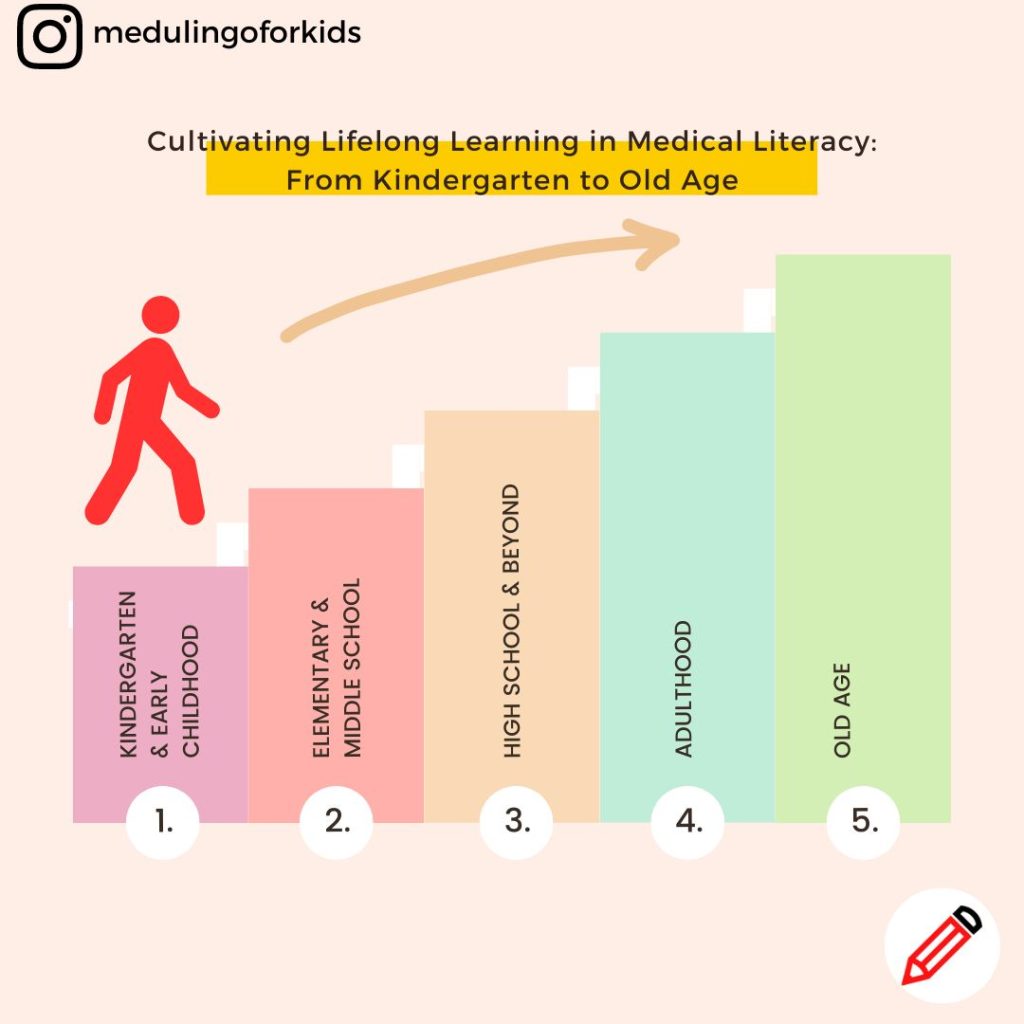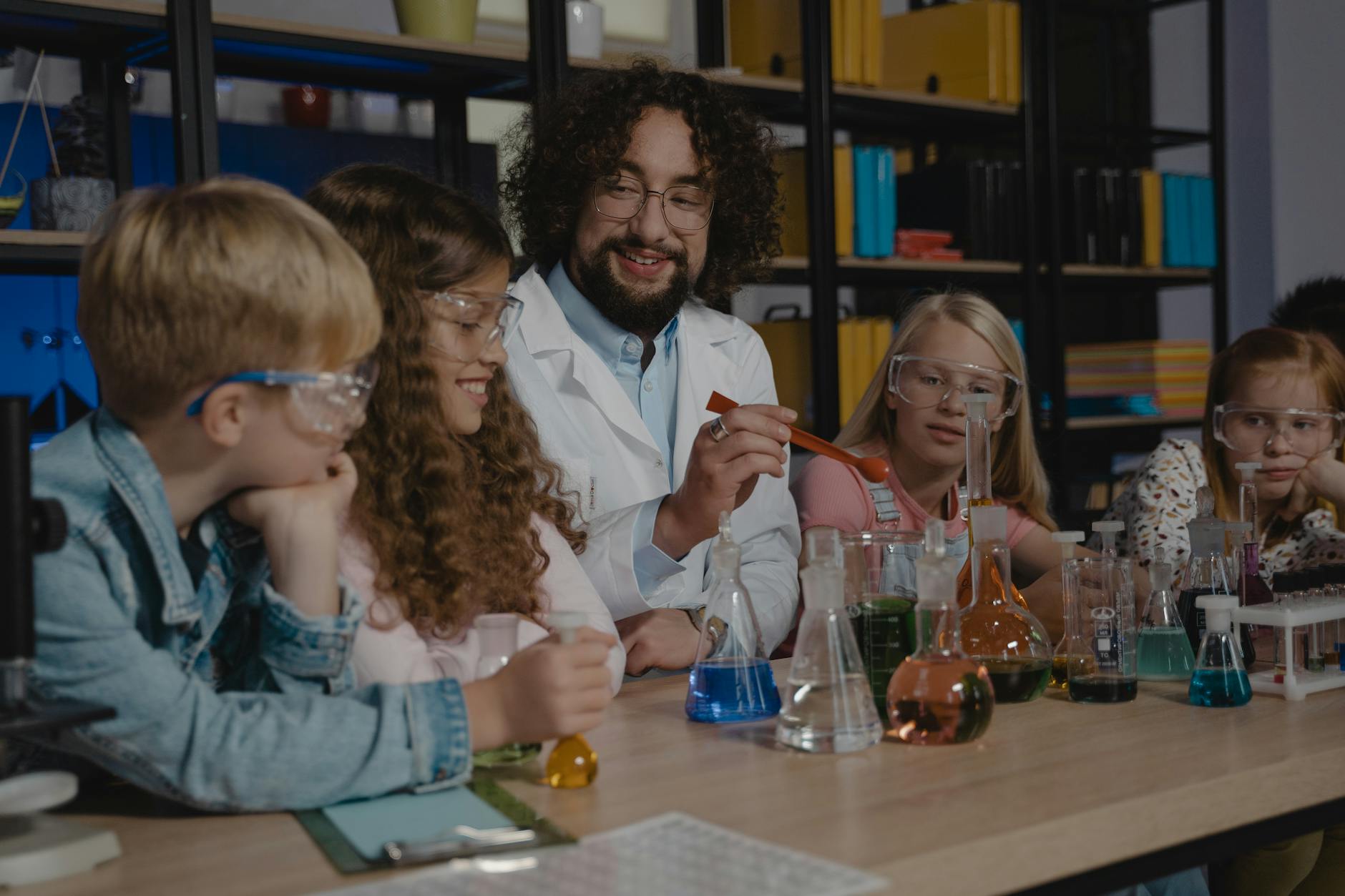Medical literacy is a critical skillset that empowers individuals to navigate the complexities of healthcare, make informed decisions, and advocate for health needs throughout life. From kindergarten to old age, promoting lifelong learning in medical literacy is essential for fostering health awareness, preventive care, and active participation in healthcare decision-making. This article explores strategies for cultivating lifelong medical literacy, drawing upon STEM programs, home education, and lifelong learning principles to empower individuals across the lifespan.

1. Starting Early: Kindergarten and Early Childhood Education
The journey towards lifelong medical literacy begins in early childhood, where foundational habits of health and wellness are established. Kindergarten and early childhood education play a pivotal role in introducing children to basic health and safety concepts, hygiene practices, and the importance of preventive care. By integrating medical literacy into early childhood curriculum through age-appropriate activities, stories, and discussions, educators lay the groundwork for a lifetime of health awareness and informed decision-making.
STEM programs designed for early childhood education offer interactive and hands-on experiences that engage young learners in exploring the human body, understanding basic anatomy, and learning about healthy habits. Through STEM-focused activities, children develop a curiosity for science and health-related topics, setting the stage for ongoing exploration and learning in medical literacy.
2. Fostering Curiosity and Exploration: Elementary and Middle School Years
As children progress through elementary and middle school, educators and parents have an opportunity to foster curiosity and exploration in medical literacy. STEM programs tailored to these age groups offer interactive experiences that deepen understanding of health concepts, encourage critical thinking, and promote problem-solving skills. Home education complements school-based learning by providing opportunities for hands-on exploration, research projects, and discussions about health-related topics.
Encouraging children to ask questions, seek answers, and engage in inquiry-based learning fosters a lifelong habit of curiosity and exploration in medical literacy. By incorporating real-life examples, case studies, and interdisciplinary connections, educators create dynamic learning environments that inspire a passion for health and wellness.
3. Empowering Critical Thinking and Decision-Making: High School and Beyond
In high school and beyond, promoting lifelong medical literacy involves empowering students with critical thinking skills, decision-making abilities, and a deep understanding of healthcare systems. STEM programs at the high school level offer opportunities for in-depth exploration of health sciences, anatomy and physiology, medical research, and healthcare professions. Home education complements traditional schooling by providing avenues for independent research, internships, and mentorship experiences in healthcare settings.
Encouraging students to critically evaluate health information, analyze healthcare policies, and engage in discussions about ethical issues in medicine cultivates a sense of social responsibility and advocacy. By empowering students to become informed consumers of healthcare and advocates for health equity, educators prepare them for active participation in healthcare decision-making throughout life.
4. Lifelong Learning and Continued Education: Adulthood and Old Age
The journey towards lifelong medical literacy extends beyond formal education into adulthood and old age. Lifelong learning opportunities, such as continuing education programs, community workshops, and online courses, provide avenues for individuals to deepen their understanding of health topics, stay informed about medical advancements, and address evolving health needs.
Home education in adulthood offers opportunities for self-directed learning, research projects, and participation in community health initiatives. By embracing a lifelong learning mindset, individuals can adapt to changing healthcare landscapes, make informed decisions about their health, and advocate for health equity in their communities.
Cultivate Lifelong Learning in Medical Literacy
In conclusion, promoting lifelong medical literacy requires a multi-faceted approach that begins in early childhood and continues throughout life. By integrating medical literacy into STEM programs, home education, and lifelong learning opportunities, educators and individuals alike can empower individuals across the lifespan to become informed, engaged, and proactive participants in their health and well-being. As we embrace the principles of lifelong learning in medical literacy, we pave the way for healthier, more informed communities and individuals who are empowered to lead fulfilling lives at every stage of life.
===
Interested in teaching medical literacy pain free? Shop medical literacy resources!

This article was drafted by ChatGPT and edited by Joan Lee Tu, the founder of MedULingo.com.
You may also be interested in the following articles:
Medical Literacy from Kindergarten: Builds a Foundation for Lifelong Learning
Planting Seeds: The Case for Starting Medical Literacy in Kindergarten
Cultivating Allergy Awareness from Kindergarten with Medical Literacy
Planting Seeds: The Case for Developing Medical Literacy on Allergies in Kindergarten
The Benefits of Developing Medical Literacy About Dermatitis from Kindergarten
Planting Seeds: The Case for Medical Literacy on Dermatitis from Kindergarten
Cultivating Lifelong Learning in Medical Literacy: From Kindergarten to Old Age
Fostering Wellness: The Importance of Medical Literacy in Kindergarten Education
Embracing Health: The Benefits of Medical Literacy in Kindergarten Education

